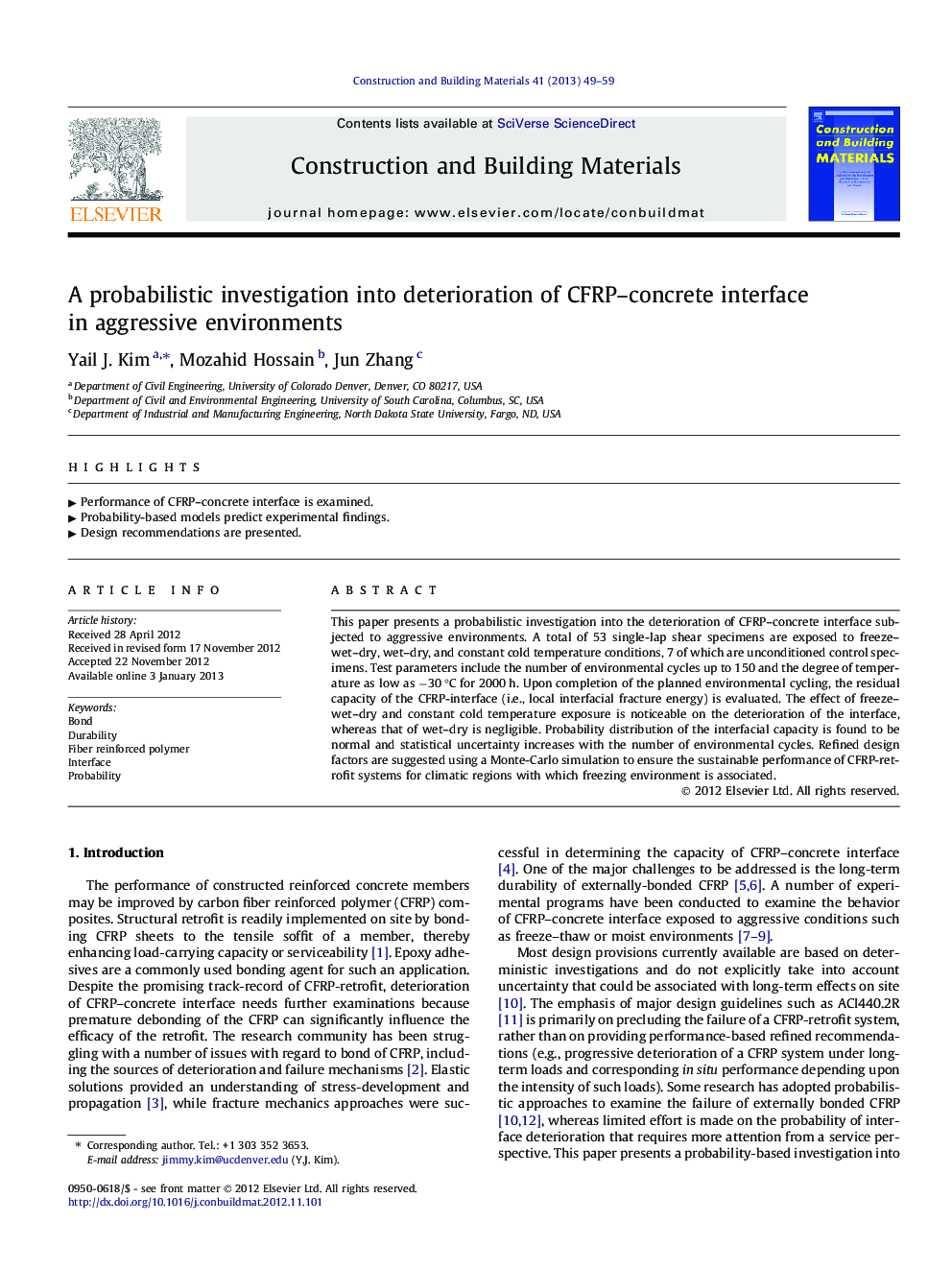| Article ID | Journal | Published Year | Pages | File Type |
|---|---|---|---|---|
| 258372 | Construction and Building Materials | 2013 | 11 Pages |
This paper presents a probabilistic investigation into the deterioration of CFRP–concrete interface subjected to aggressive environments. A total of 53 single-lap shear specimens are exposed to freeze–wet–dry, wet–dry, and constant cold temperature conditions, 7 of which are unconditioned control specimens. Test parameters include the number of environmental cycles up to 150 and the degree of temperature as low as −30 °C for 2000 h. Upon completion of the planned environmental cycling, the residual capacity of the CFRP-interface (i.e., local interfacial fracture energy) is evaluated. The effect of freeze–wet–dry and constant cold temperature exposure is noticeable on the deterioration of the interface, whereas that of wet–dry is negligible. Probability distribution of the interfacial capacity is found to be normal and statistical uncertainty increases with the number of environmental cycles. Refined design factors are suggested using a Monte-Carlo simulation to ensure the sustainable performance of CFRP-retrofit systems for climatic regions with which freezing environment is associated.
► Performance of CFRP–concrete interface is examined. ► Probability-based models predict experimental findings. ► Design recommendations are presented.
